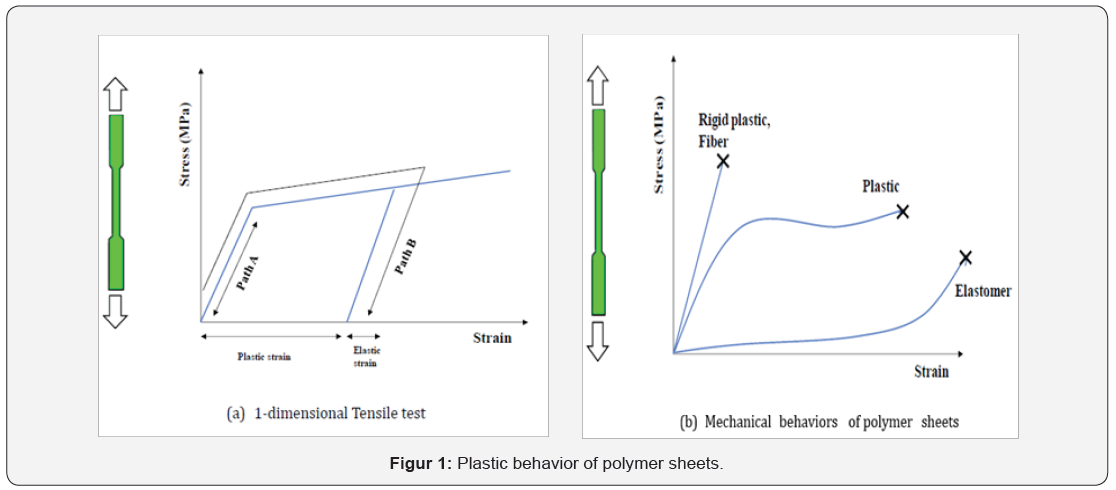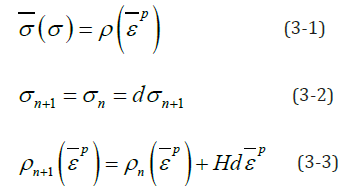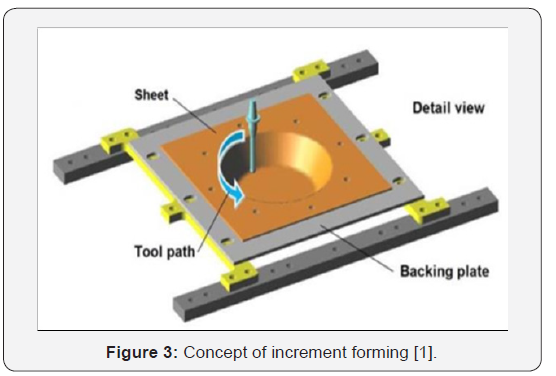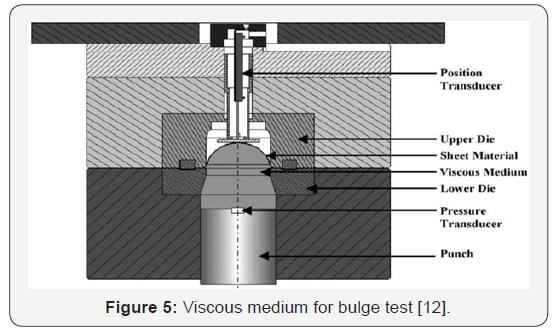A Review on Plastic Behavior of Polymer Sheets and Forming Process-Juniper Publishers
Authored
by Eun Ho Lee









Abstract
This paper presents a mini review about plastic
behaviour of polymer sheets. The fundamental of plasticity and concept
of constitutive modeling are introduced. As an application of the
plastic behaviour, studies on forming process of polymer sheets are
presents. Finally, the future woks are also discussed in the conclusion
section.
Keywords: Polymer; Plastic behaviour; Forming; Target temperature; Lightweight; Metal flow
Introduction
Polymer is one of widely used material due to the
great availability and low cost. For mass production, moulding and
extrusion technologies have been widely employed for polymer processing
in industries [1]. Recently, automotive industries are trying to reduce
the weight of the vehicles for improving the fuel efficiency [2]. For
the reason, they have an interest in polymer materials, and many
researchers have studied mechanical behavior of polymer materials.
Figure 1(a) shows an example of 1-dimensional tensile test which is the
most widely used material testingmethods to obtain the material’s
behavior. When a material is getting deformed, the material has
aproportional relation between stress and strain within a range of
strain and this proportional relation iscalled elastic modulus. This
strain rage is called elastic range and the stress is called yield
stress. In theelastic range, the deformed material can recover the
original shape, as shown in the path A. However, if thestrain level is
over the elastic limit, a permanent deformation remains on the material
even though thematerial slightly recovers the strain [3,4]. This
recovered strain is called elastic strain, and the permanentdeformation
is called plastic strain, as shown in path B of Figure 1(a). Figure 1(b)
shows general behaviors ofpolymer
materials. The elastic behavior is almost the same for all the
materials. However, right after theelastic limit, rigid plastic easily
leads to a material failure while other materials have more margin
to bedeformed. For the reason, rigid plastic material does not
show plastic behavior. This break point determinesthe elongation,
the ration between the deformed length and the original length
until the break point. Table 1 shows a summary of the mechanical
property of polymer materials [5].


During the plastic deformation, the stress-strain relation is
given as below [6,7]:

then the increment of the plastic strain is given with the flow
rule,

dσ is the increment of stress, D is the elastic modulus
matrix, dε is the increment of total strain. dε e represents
the increment of elastic strain, dε p is the increment of the
plastic strain. q is the plastic potential function, and p dε is the
equivalent plastic strain. In order to obtain the dε p , below three
conditions should be employed,

σ is equivalent stress, ρ is flow stress model, and H is
the slope of stress-strain curve. Equation (3-1) is the yielding
condition, (3-2) is about the return mapping stress, and (3-3) is
the hardening behavior. Solving the equations from (3-1) to (3-
3) provides the increment of the plastic strain and stress. Then
the strain and stress are used in numerical analysis of the plastic
behavior.

As an application of the plastic behavior, some researchers
have developed forming technologies for polymer materials.
Thermoforming is one of the most popular forming processes
for polymer sheets. As shown in Figure 2 [8], the thermoforming
process consists of three steps; heating, shaping and trimming.
Withthe thermoforming, a polymer sheet is heated to a target
temperature, then formed to a specific shape in a mold. The
formed sheet is trimmed to make a product. The vacuum forming
is very similar to the thermoforming. In the vacuum forming, a
polymer sheet is heated to a target temperature, then stretched
onto a mold, and forced against the mold with a vacuum condition
to reach the target shape.
The thermoforming and vacuum forming requires a mold to
form a polymer sheet to the target shape. The investment cost
of the mold is expensive. In addition, a mold cannot be used for another shape. To reduce the cost, some researchers started
studying incremental forming for polymers [9,10]. Figure 3 shows
the concept of the incremental forming. A polymer sheet is locally
deformed by a forming tool which moves on the surface of the
polymer sheet. Since the moving tool is following a defined path in
3-dimensional space, this forming process is flexible to be applied
to arbitrary shapes.
Some researchers have tried to build lightweight structures
with polymers sheets. Figure 4(b) shows a pyramidal kagome
structure made of a polypropylene sheet. Since the polymer
sheet was not able to be deformed to reach the target shape in
room temperature, a heated die set was employed to increase
the formability of the polymer sheet, as shown in Figure 4(a).
This study showed a possibility to make a complex shape by a
polymer sheet forming process. Polymer sheets can be employed
as a medium material to help metal flow in sheet metal forming
processes. Figure 5 shows a viscous pressure bulge (VPB) test
under biaxial state of stress. Since the viscous medium help the
flow of the sheet metal, the VPB forming process was able to reach
large strain state. As shown in above examples, forming process
of polymer sheets has many chances to be employed in industrial
applications.



Conclusion
This paper briefly reviews the plastic behavior of polymer materials and forming technologies as an application. To make more application of the plastic behavior, forming limit [13] and joining technologies [14] should be accounted. Because of the low cost and great availability, the demand of polymer is getting growing, and both fundamental and practical studies are required [15].
For more
details Academic
Journal of Polymer Science please click on: https://juniperpublishers.com/ajop/index.php

Comments
Post a Comment